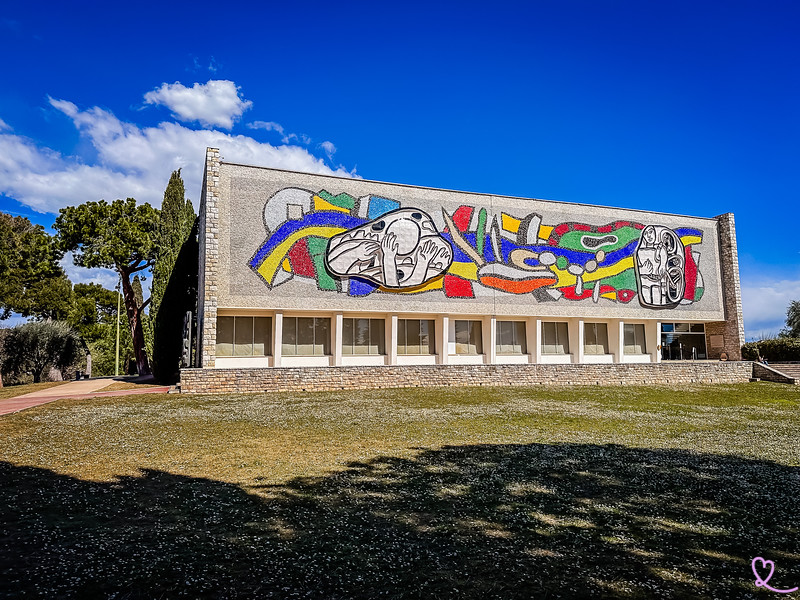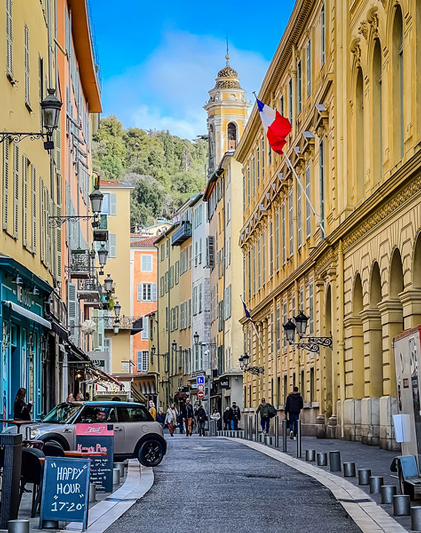Located in a commune bordering Antibes, Fernand Léger museum is a national museum dedicated to this cubist painter. Fernand Léger was a regular visitor to Biot from 1949, acquiring a plot of land in 1955, the year of his death. The museum’s collection includes over 450 works by this major 20th-century artist.
Here are our practical tips for planning your visit to the Musée Fernand Léger in Biot.

This guide is completely independent, based on our experiences. We visited the region anonymously, making our own choices and paying our bills in full.
Is a visit to Fernand Léger museum worthwhile?
Yes, Fernand Léger museum is well worth a visit. It’s a pleasure to discover little-known aspects of the artist’s work, particularly in the fields of decorative and monumental art (a project to build a kindergarten in the public space…). We even watched a film made by the artist in the auditorium! The tour also allows visitors to appreciate the evolution of the artist’s style, from his neo-Impressionist beginnings to his Cubist successes. Last but not least, we found the garden a delight with its sculptures.
This is one of the best activities near Antibes.
What you can see
A monumental mosaic fresco

The Fernand Léger museum is France’s first monographic museum, housed in an architectural complex specially designed to preserve the artist’s work. The massive building was inspired by models made by the painter. We really liked its facade, adorned with a monumental polychrome mosaic fresco. Designed by Fernand Léger for the Velodrome stadium in Hanover, Germany, it features 2 ceramic bas-reliefs.
The garden and its sculptures

The museum is set in a pleasant, large garden with Mediterranean trees. Here we admired beautiful ceramic and mosaic sculptures, based on studies by Fernand Léger.
The auditorium

We were very surprised to discover Fernand Léger as a filmmaker in the auditorium. A highly original 20min black-and-white short film was shown. Entitled Le Ballet Mécanique (1924), it features everyday objects that come to life, while the humans are automatons. Made with the artist Man Ray, this is Fernand Léger’s first film.
Wall compositions for architecture

As early as the 1920s, Fernand Léger was working on abstract, colorful ceramic mural compositions for architectural projects. His aim was to create social art accessible to all. Many of his projects were interrupted by his death. You can still see them, and even touch the mosaics.
Neo-impressionist and abstract beginnings

We learned a lot about Fernand Léger’s artistic career during our visit. The most surprising thing for us was to see his beginnings in landscape painting, in a neo-impressionist style, and in abstraction, far removed from the cubist style that made him a part of art history.
Cubism and the “law of contrasts

Around 1912-1913, Fernand Léger found his Cubist style and perfected his “law of contrasts”. It consists in creating dynamism from oppositions between shades of color or shapes. Many of the works in this section, which we found really interesting, help us to understand this concept.
Representing leisure activities

Throughout his career, Fernand Léger produced works depicting leisure activities. The artist was in tune with his era, marked by the arrival in power of the Front Populaire in 1936 and the democratization of leisure activities. This is our favorite section, as these paintings show the evolution of popular society.
Object representation

After the Second World War, during which he was mobilized, Fernand Léger became very interested in objects, particularly mechanical ones, as symbols of modern society. One painting in this section stood out for its audacity: Mona Lisa with Keys (1930).
Temporary exhibitions

You can also view temporary exhibitions, which change regularly. As far as we’re concerned, we were delighted with the one we saw, which was devoted to the fresco Le Transport des Forces. It was commissioned from Fernand Léger in 1937 for the Palais de la Découverte. We were stunned by this monumental, sublime composition.
The Fernand Léger Museum in Antibes: how to get there
Where is Fernand Léger museum ?
- In Biot, on the outskirts of Antibes.
- It’s less than a 5-minute drive from the Antibes activity park, where you’ll find a host of attractions.
- It is not easily accessible by public transport or on foot from downtown Antibes.
Access by car and parking
It takes 15 minutes by car to reach the museum from downtown Antibes. The museum has a free parking lot, with a parking space for people with reduced mobility. The easiest way to explore the region is by car.

OUR TPS FOR RENTING YOUR CAR IN Provence
- Compare prices on our preferred platform: DiscoverCars – one of the best rated sites.
- Choose a car that is powerful enough (the roads are steep) but compact (some passages are narrow).
- Think of thecomplete insurance (some roads are tortuous and narrow).
- There is a lot of demand, book it early.

Public transport access
You can take buses 10 and 21, and get off at the “Musée Fernand Léger” stop. From downtown it’s a 40-minute drive. See timetables here.
Visiting difficulties
There are no particular difficulties. The entire museum is accessible to people with reduced mobility.
Practical tips for visiting Fernand Léger Museum
Schedules and prices
The Fernand Léger museum is open every day except Tuesdays, January1, May1 and December 25:
- May1 to October 31: 10 a.m. to 6 p.m.
- November1 to April 30: 10 a.m. to 5 p.m.
Prices are as follows:
- Full price: €5.50 (outside exhibition periods) / €7.50 (during exhibition periods).
- Reduced rate: €4 (outside exhibition periods) / €6 (during exhibition periods).
Free admission for under-26s, the disabled and everyone on the 1st Sunday of the month. For further information and to find out more about the exhibition program, visit the official website here.
How long
Depending on your interest in the artist, you can spend from 1 to 2 hours in the museum.
Best moment
If you want to be sure of a quiet place for your visit, it’s best to arrive during opening hours, and if possible outside school vacations.

Direction of visit
We advise you to follow the direction indicated.
Visiting with children
The museum offers family workshops for a child-friendly experience.

Eating out
You can enjoy your meal at the museum’s refreshment bar, open during opening periods. You can check its opening on the official website here.
If you prefer a restaurant, you’ll soon be able to read our article on the best restaurants in Antibes.
Hotels
Biot is close to Antibes, making it an ideal place to spend the night. Here are our recommendations:
WHERE TO STAY IN Antibes
Option 1: near the ramparts
Enjoy the charm of the old town and all its restaurants.
We recommend..:
- Hotel la Villa Port – prices, pictures and availability
- Hotel La Place – prices, pictures and availability

Option 2: Beachside
Around the beaches of Antibes (Ponteil and Salis), where views of the ramparts and mountains are exceptional.
We recommend..:
- Hotel La Jabotte – prices, pictures and availability

Option 3: Juan-les-Pins
If you are looking for a less classical atmosphere, stay in the heart of the old town near the main attractions.
- Hotel La Villa Cap d’Antibes – prices, pictures and availability
- Hotel Alexandra – prices, pictures and availability




